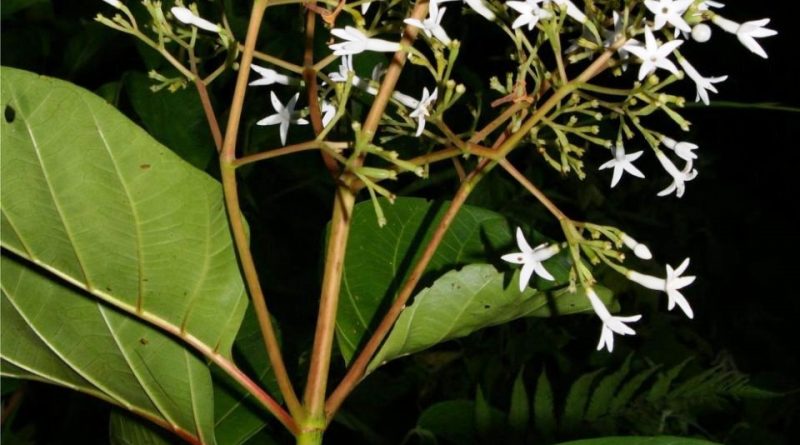Ladenbergia oblongifolia
Ladenbergia oblongifolia
Ladenbergia oblunga (Ladenbergia oblongifolia (Humb. Ex Mutis) L. Andersson) is a tree species belonging to the Rubiaceae family.
Systematics –
From the systematic point of view it belongs to the Eukaryota Domain, Plantae Kingdom, Magnoliophyta Division, Magnoliopsida Class, Rubiales Order, Rubiaceae Family, Cinchonoideae Subfamily, Cinchoneae Tribe, Cinchoninae Subtribe and therefore to the Genus Ladenbergia and the Species L. oblongifolia.
The terms are synonymous:
– Buena magnifolia (Ruiz & Pav.) Wedd .;
– Buena nitida (Benth.) Wedd .;
– Cascarilla caduciflora (Humb. & Bonpl.) Wedd .;
– Cascarilla gavanensis Schltdl .;
– Cascarilla magnifolia (Ruiz & Pav.) Wedd .;
– Cascarilla magnifolia var. caduciflora (Humb. & Bonpl.) Wedd .;
– Cascarilla magnifolia var. rostrata (Wedd.) Wedd .;
– Cascarilla magnifolia var. vulgaris Wedd .;
– Cascarilla nitida (Benth.) Wedd .;
– Cascarilla oblongifolia (Humb. Ex Mutis) Wedd .;
– Cascarilla rostrata Wedd. Synonym;
– Cinchona caduciflora Humb. & Bonpl .;
– Cinchona cuatrecasasii Standl. ex Steyerm .;
– Cinchona grandifolia Ruiz & Pav. ex Poir .;
– Cinchona heterocarpa H.Karst .;
– Cinchona lutescens Ruiz ex Vitman;
– Cinchona magnifolia Ruiz & Pav .;
– Cinchona oblongifolia Humb. ex Mutis;
– Cinchona oblongifolia Ruiz & Pav .;
– Ladenbergia gavanensis (Schltdl.) Standl .;
– Ladenbergia magnifolia (Ruiz & Pav.) Klotzsch;
– Ladenbergia magnifolia var. rostrata (Wedd.) Standl. ;
– Ladenbergia nitida (Benth.) Klotzsch.
Etymology –
The term Ladenbergia is not known.
The specific epithet oblongifolia comes from oblong oblong and leaf folium: with oblong leaves
Geographic Distribution and Habitat –
Ladenbergia oblongifolia is a plant native to Colombia and present in the state of Rondônia, Amazônia, Acre (Brazil), Venezuela, Ecuador, Peru and Bolivia.
Its habitat is that of humid forests at altitudes between 15 and 234 m. s.l.m ..
Description –
Ladenbergia oblongifolia is a tree with large, opposite, ovate – lanceolate, dark green leaves and evident veins.
The flowers are small, in corymbose inflorescence, are hermaphrodite, with white bracts 4 cm long; they have a fleshy corolla.
The fruits are thick and woody.
Cultivation –
Ladenbergia oblongifolia is a spontaneous plant that grows in the humid forests of the valleys or of the Andean hills where they have been used since ancient times for some medicinal purposes.
Uses and Traditions –
Ladenbergia oblongifolia is a species that was originally described by Alexander von Humboldt and José Celestino Bruno Mutis, and has been given the simplest Asian name by Bengt Lennart Andersson.
The IUCN classifies this species globally as vulnerable due to the reduction and fragmentation of its habitats.
Studies on this plant have led to the isolation of some alkaloids derived from cinchonicin: epicinchonicinol, cinchonidicinol and a mixture of dihydrocinchonicinol and dihydrocinchonidicinol, present and extracted from the dried bark of Ladenbergia oblongifolia.
It is known of this plant that it is used to treat unspecified medicinal ailments but research on it is not enough to have a certain response.
Method of Preparation –
There is not enough data to recognize the particularities of its use, even if it is known that the bark is used for this plant.
Guido Bissanti
Sources
– Acta Plantarum – Flora of the Italian Regions.
– Wikipedia, the free encyclopedia.
– Treben M., 2000. Health from the Lord’s Pharmacy, Tips and experiences with medicinal herbs, Ennsthaler Editore
– Pignatti S., 1982. Flora of Italy, Edagricole, Bologna.
– Conti F., Abbate G., Alessandrini A., Blasi C. (edited by), 2005. An annotated checklist of the Italian vascular flora, Palombi Editore.
Warning: Pharmaceutical applications and alimurgical uses are indicated for information purposes only, they do not in any way represent a medical prescription; therefore, no responsibility is accepted for their use for healing, aesthetic or food purposes.


